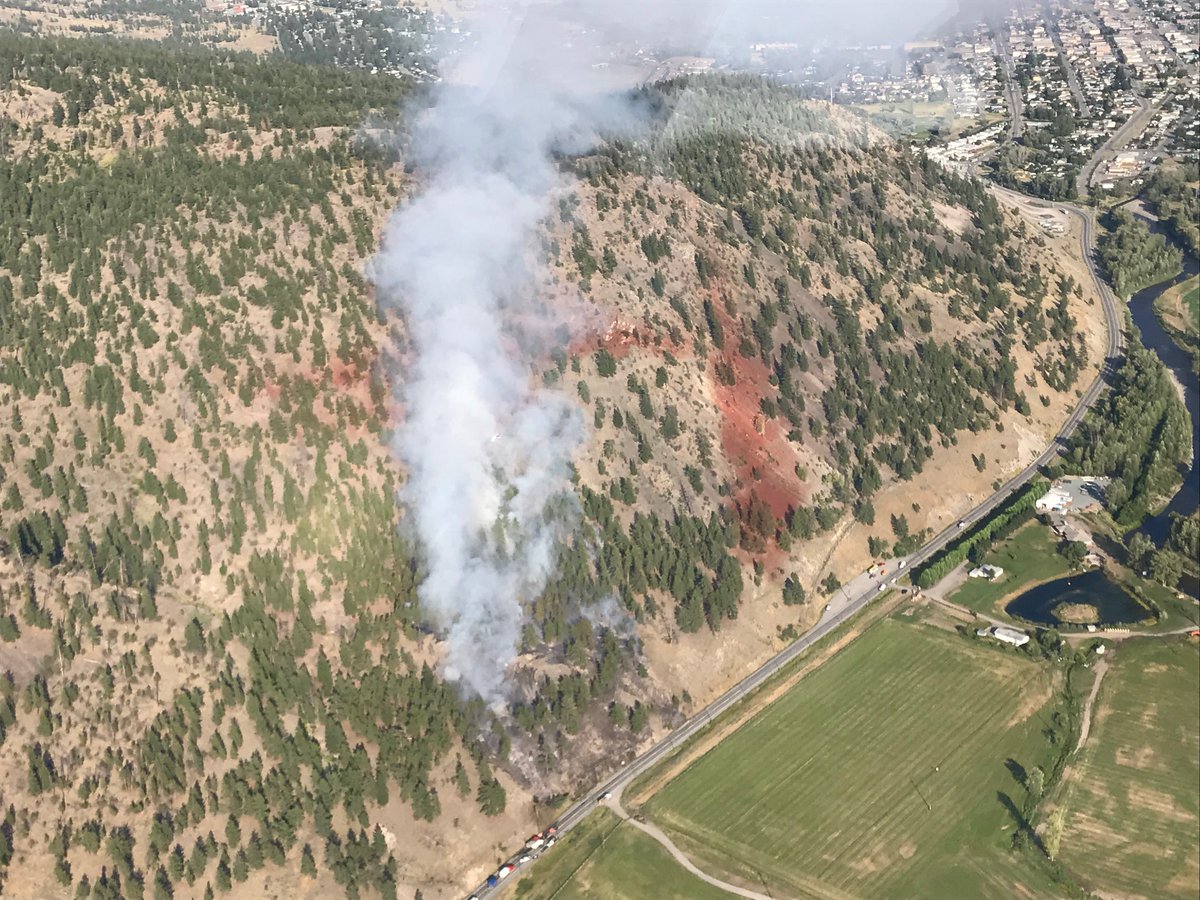Spring, at long last, is slowly starting to appear in B.C.’s Interior.

Yet with the welcomed arrival of warm temperatures also comes a warning from B.C.’s Wildfire Service: keep an eye out for overwintering fires.
WATCH BELOW (Aired Feb. 20, 2019) More money in B.C. budget for wildfire response as natural disaster costs soar

“An overwintering fire can occur when a wildfire that burned deep underground last year has continued to smoulder all winter long,” the Ministry of Forests explained in a press release on Tuesday.
“Given the extent and intensity of many wildfires in the summer of 2018, some of these residual hot spots could flare up with the arrival of warmer and drier weather this spring.”
The ministry added that most overwintering fires will occur well within an original fire’s perimeter. Many areas near communities where wildfires burned last year are being actively patrolled by firefighters and scanned using thermal imaging technology.
“It is standard practice for the B.C. Wildfire Service to monitor previous wildfire sites to ensure that any flare-ups from overwintering fires are located and suppressed if necessary,” said the ministry. “However, members of the public are encouraged to report any wildfire or smoke they see, even if it is located within the perimeter of a previous fire.”
WATCH BELOW (Aired March 21, 2019) Fighting fire with cattle, flame and logging

Below are questions and answers from the Ministry of Forests regarding overwintering fires.
What is an overwintering fire? Why might it emerge with the arrival of warmer and drier weather?
- An overwintering fire is a remnant of previous wildfire activity that can burn deep into the ground and smoulder, even while showing no visible signs of activity above ground.
- Overwintering fires can remain dormant and undetected all winter long, but hot spots may re-emerge with a return to warm and dry weather conditions.
What are the visible signs of an overwintering fire?
- Given the large size of many wildfires in B.C. last year, some wildfires burned deep into organic soil layers, increasing the likelihood that overwintering fires will emerge in the spring.
- The most common visual signs are smoke, smouldering ground or open flame within the wildfire’s original perimeter (the outer boundary of a fire).
What should be done if wildfire activity is seen?
- Any perceived wildfire activity should be reported, even if it is within a previous wildfire’s perimeter. Call 1-800-663-5555 toll-free or *5555 on a cellphone.
What kind of suppression response will the B.C. Wildfire Service provide for overwintering fires?
- The B.C. Wildfire Service monitors former wildfire areas and any renewed activity will be assessed.
- In many cases, an overwintering fire will emerge deep within the original fire’s perimeter and can be monitored by the B.C. Wildfire Service while it extinguishes itself naturally.
- If an overwintering fire emerges in an area containing unburned fuel or poses a potential threat to communities, infrastructure or natural resources, wildfire crews may be dispatched to extinguish the hot spot to ensure the fire does not spread.
Could an overwintering fire pose a threat to communities?
- The majority of overwintering fires will remain well within the original fire’s perimeter.
- Overwintering fires present a limited risk to communities, since previous wildfire areas near communities have been scanned using thermal-imaging technology and were patrolled extensively by firefighters.
- However, any wildfire activity should be reported, even if it is within a previous wildfire perimeter. Call 1-800-663-5555 toll-free or *5555 on a cellphone.



Comments